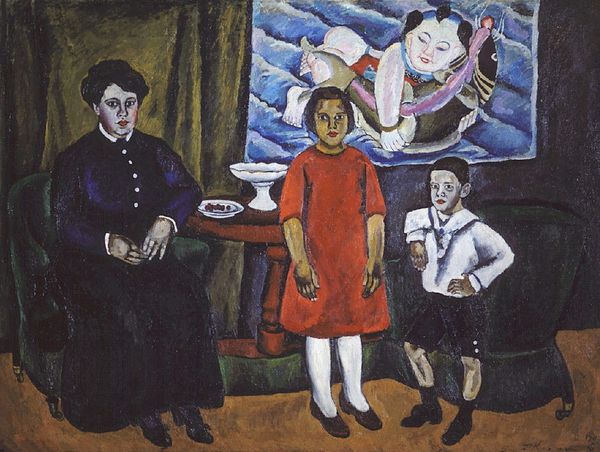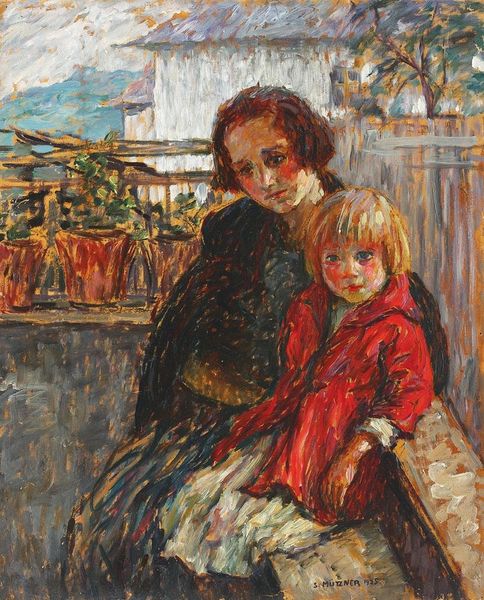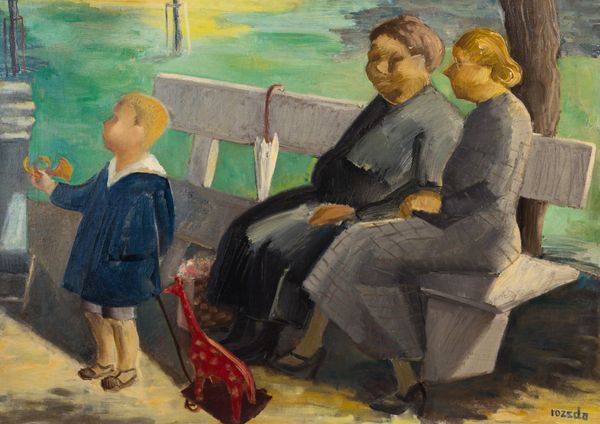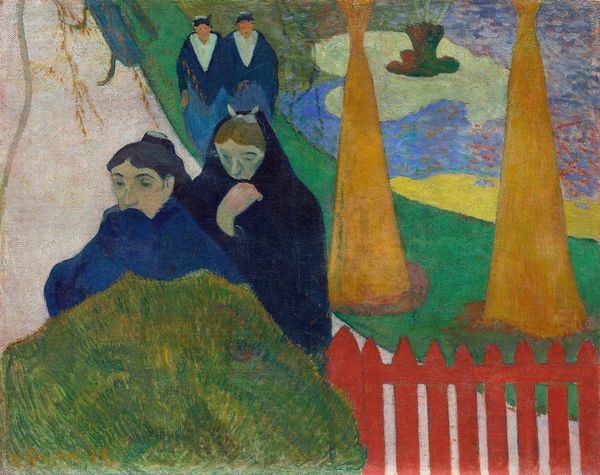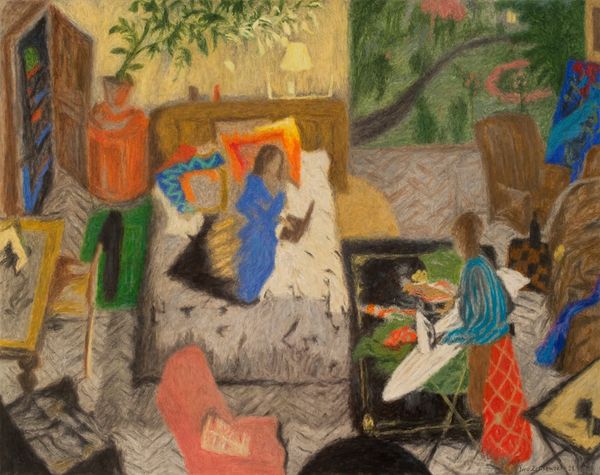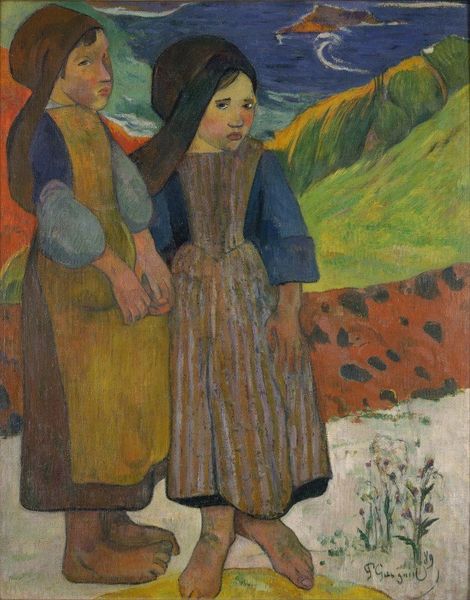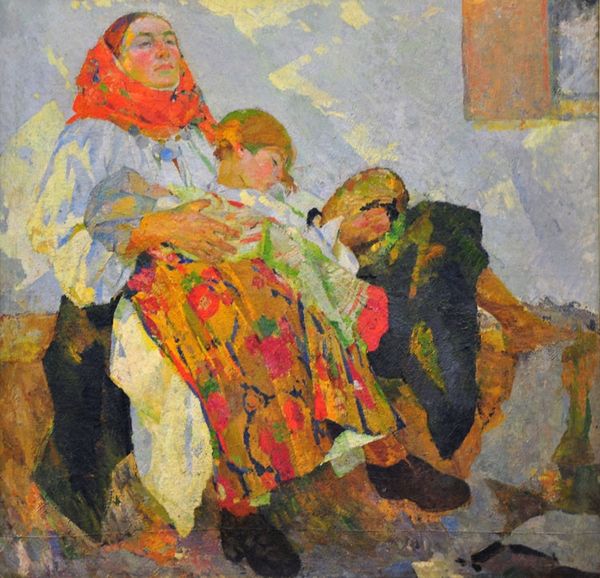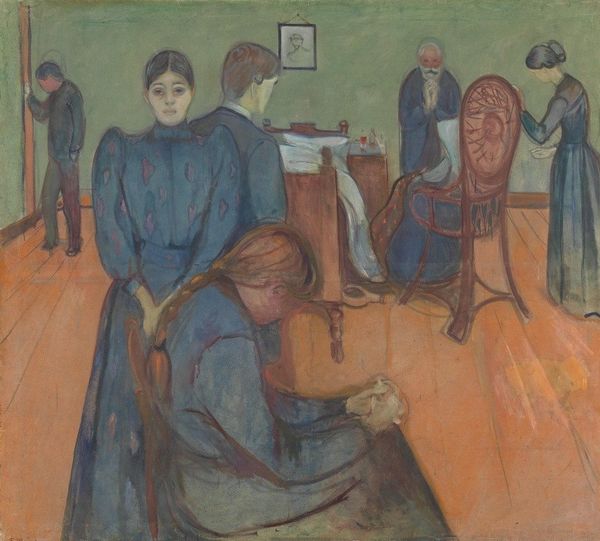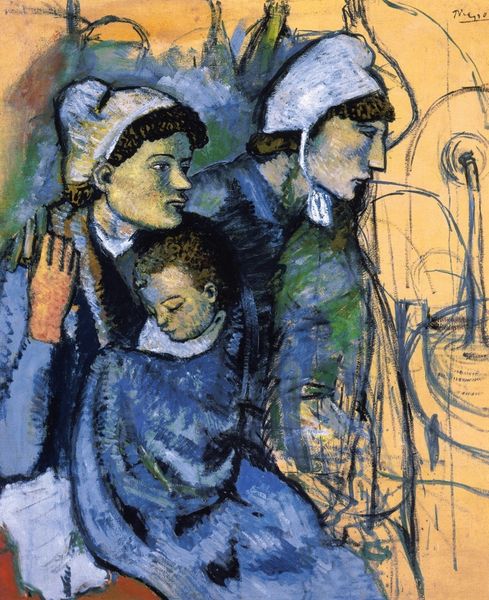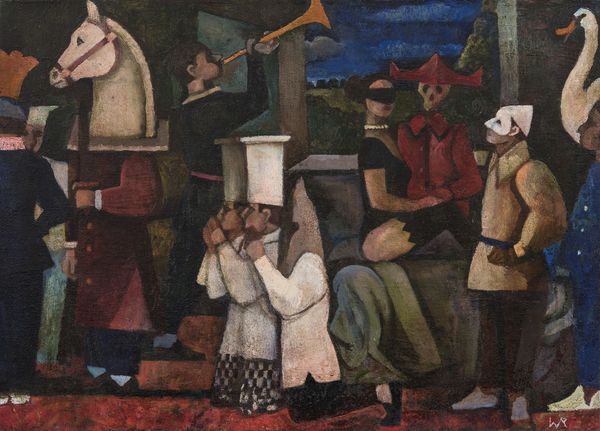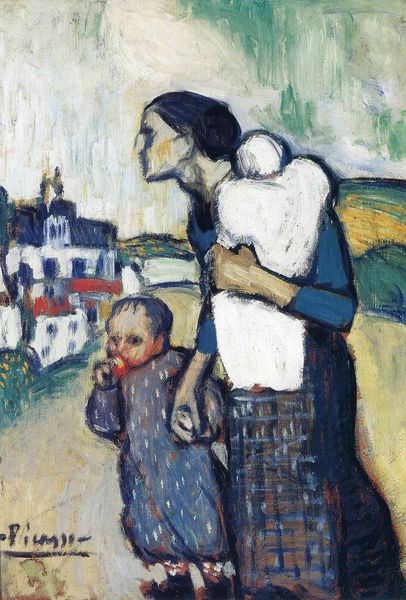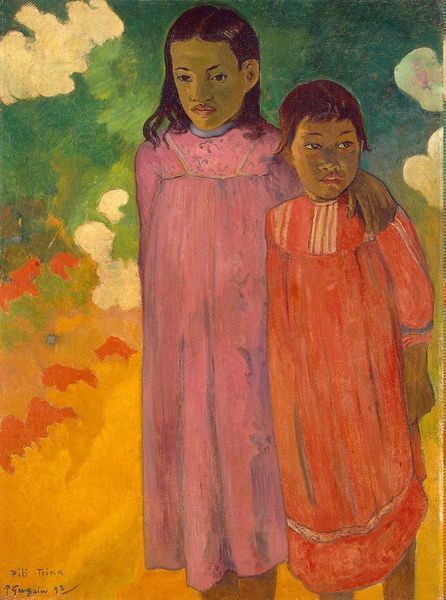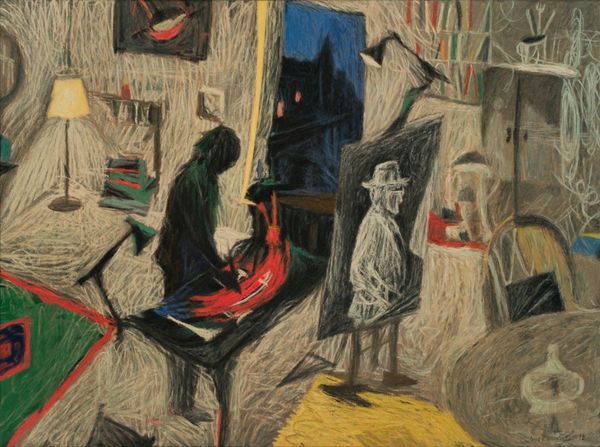
painting, oil-paint, impasto
#
painting
#
oil-paint
#
impasto
#
group-portraits
#
post-impressionism
Copyright: Public Domain: Artvee
Editor: So this is Paul Gauguin's "Schuffenecker's Studio," painted in 1889. The figures have such presence, but there’s also something so detached about them. How do you interpret this work? Curator: I see a commentary on the complexities of domestic life and the male gaze within the artistic sphere. Look at the way Gauguin positions the female figure and the children – almost objects within the studio space, arranged and observed. Editor: I hadn't thought of it that way, but I see what you mean. The mother's pose is so formal, not necessarily maternal. Curator: Exactly. It challenges our notions of idealized motherhood. What power dynamics are at play here, especially given Gauguin’s complicated relationships with women and the broader patriarchal art world? Is he complicit in this objectification, or is he offering a critique? Editor: That is really interesting, it does push beyond a simple domestic scene. The artist's choice to place the family within the confined studio, against the backdrop of what seems like a barred window, is striking. Is it symbolic of the lack of freedom women and children have in domestic settings? Curator: It's compelling to view it through that lens, to think of domesticity as confinement. The colours, too, the muted blues and reds, don’t exactly evoke warmth, do they? Editor: Not really. It makes me wonder what the figures themselves thought about how they were represented. It challenges what art history calls representation, and how complex it is. Thanks, this was enlightening! Curator: Likewise! Seeing the art this way can enable meaningful discussion and challenge social norms.
Comments
No comments
Be the first to comment and join the conversation on the ultimate creative platform.
